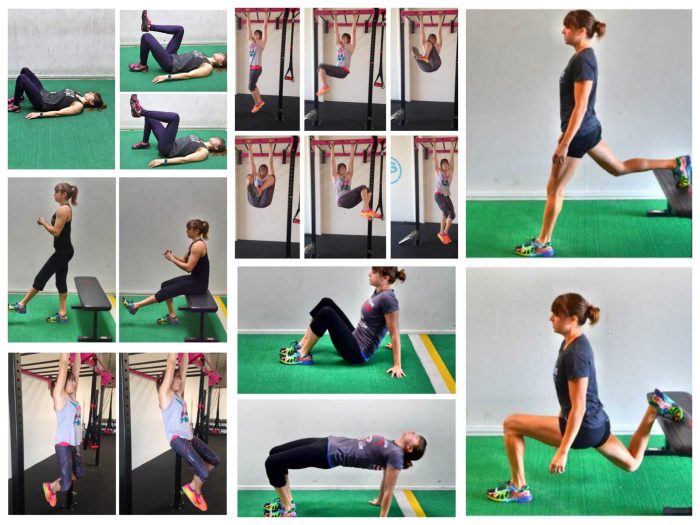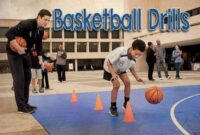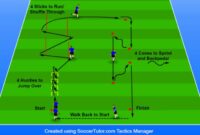Bodyweight strength training sets the stage for this enthralling narrative, offering readers a glimpse into a story that is rich in detail and brimming with originality from the outset. As we delve into the world of calisthenics and bodyweight exercises, prepare to be amazed by the transformative power they hold for individuals of all fitness levels.
Benefits of Bodyweight Strength Training

Bodyweight strength training offers numerous advantages over traditional weightlifting. It can be done anywhere, without the need for expensive equipment, making it a cost-effective and convenient option for many individuals. Additionally, bodyweight exercises engage multiple muscle groups simultaneously, leading to improved overall muscle strength and endurance.
Improved Muscle Strength and Endurance
Bodyweight exercises like push-ups, pull-ups, and squats are effective in targeting different muscle groups such as the chest, back, arms, and legs. By incorporating a variety of bodyweight exercises into your routine, you can progressively overload your muscles and see significant improvements in strength and endurance over time.
Accessibility for All Fitness Levels
One of the key benefits of bodyweight training is its accessibility to individuals of all fitness levels. Whether you are a beginner or an advanced athlete, bodyweight exercises can be modified to suit your current strength and abilities. This scalability makes it an inclusive form of strength training that can be tailored to meet individual needs and goals.
Essential Bodyweight Exercises

When it comes to bodyweight strength training, mastering fundamental exercises is crucial for building a solid foundation of strength and stability. These basic movements form the building blocks for more advanced variations and help improve overall fitness levels.
Push-Ups
Push-ups are a classic bodyweight exercise that targets the chest, shoulders, triceps, and core muscles. To perform a push-up, start in a high plank position with your hands shoulder-width apart. Lower your body until your chest nearly touches the floor, then push back up to the starting position. Variations include incline push-ups for beginners or diamond push-ups for added difficulty.
Squats
Squats are essential for strengthening the lower body, including the quadriceps, hamstrings, and glutes. To do a bodyweight squat, stand with your feet hip-width apart, then lower your body by bending your knees and pushing your hips back. Keep your chest up and back straight throughout the movement. Beginners can perform assisted squats by holding onto a stable surface for support.
Planks
Planks are effective for building core strength and stability. To perform a plank, start in a forearm plank position with your elbows directly beneath your shoulders. Engage your core muscles and hold your body in a straight line from head to heels. Beginners can start with a modified plank on their knees or by holding the position for shorter durations.
Importance of Mastering Basic Movements
Mastering basic bodyweight exercises is essential for developing proper form, technique, and muscle activation. It helps prevent injuries and ensures that you’re ready to progress to more challenging variations safely. By focusing on mastering the basics first, you’ll build a strong foundation for long-term progress and success in your fitness journey.
Modifications for Beginners
For beginners or individuals with mobility limitations, modifications can be made to bodyweight exercises to accommodate different fitness levels. This includes starting with easier variations, adjusting range of motion, or using props for support. It’s important to listen to your body and work within your current abilities to avoid overexertion or strain.
Structuring a Workout Routine
When structuring a bodyweight workout routine, it’s important to include a variety of exercises that target different muscle groups. This can be done by alternating between upper body, lower body, and core exercises to ensure a balanced workout. Aim to incorporate both strength and cardio elements for a well-rounded training session. Remember to warm up before starting your workout and cool down afterward to aid in recovery.
Progressions in Bodyweight Training: Bodyweight Strength Training
When it comes to bodyweight strength training, progressing in your exercises is essential to continue challenging your muscles and seeing improvements in your strength and endurance. This is where the concept of progressive overload comes into play, which involves gradually increasing the difficulty of your workouts over time to keep your muscles adapting and growing.
One way to progress in bodyweight training is by changing the leverage of an exercise. For example, in a push-up, you can start with a traditional push-up on the floor and then progress to an incline push-up with your hands elevated on a bench. This increases the difficulty by changing the angle of your body and placing more weight on your arms.
Another way to advance exercises is by adjusting the range of motion. For instance, in a squat, you can start with a shallow squat and gradually work towards a deeper squat to engage more muscles and increase the challenge on your lower body.
Additionally, you can vary the tempo of your movements to add a new level of difficulty. Slowing down the eccentric (lowering) phase of an exercise can increase time under tension and stimulate muscle growth.
Examples of Progressions for Various Bodyweight Exercises
- Push-up Progressions: from knee push-ups to traditional push-ups to diamond push-ups
- Pull-up Progressions: from assisted pull-ups to chin-ups to wide grip pull-ups
- Squat Progressions: from bodyweight squats to pistol squats to jump squats
- Plank Progressions: from forearm plank to side plank to plank with leg lifts
Monitoring Progress and Avoiding Plateaus, Bodyweight strength training
To monitor progress in bodyweight training, keep track of the number of repetitions, sets, and rest times for each exercise. You can also take measurements of your body or perform regular fitness tests to see improvements in strength and endurance.
To avoid plateaus, continue challenging yourself with new progressions, variations, and intensity levels in your workouts. Listen to your body, ensure proper form, and stay consistent with your training to keep seeing results in your bodyweight strength training journey.
Incorporating Bodyweight Training into a Fitness Program

Bodyweight exercises can be a valuable addition to any fitness program, enhancing overall strength, flexibility, and endurance. They offer a versatile way to work out, complementing other forms of training like cardio or weightlifting.
Benefits of Incorporating Bodyweight Workouts for Improving Functional Fitness
- Bodyweight training helps improve functional fitness by focusing on movements that mimic everyday activities, enhancing balance, coordination, and stability.
- These exercises engage multiple muscle groups simultaneously, promoting overall body strength and mobility.
- Bodyweight workouts can be tailored to individual fitness levels, making them accessible to beginners and challenging for advanced athletes.
Ideas on How to Combine Bodyweight Exercises with Equipment
Integrating bodyweight exercises with equipment like resistance bands or stability balls can add variety and intensity to your workouts. Here are some ways to mix them:
- Use resistance bands to add external resistance to bodyweight movements like squats, lunges, or rows, increasing muscle engagement.
- Incorporate stability balls for exercises like planks, push-ups, or bridges to challenge balance and core stability while performing bodyweight exercises.
Guidance on Creating a Balanced Fitness Program with Bodyweight Training
When incorporating bodyweight training into your fitness program, consider the following tips to ensure a well-rounded approach:
- Include a mix of bodyweight exercises targeting different muscle groups to promote overall strength and prevent muscle imbalances.
- Combine bodyweight workouts with cardiovascular activities like running, cycling, or swimming to enhance endurance and cardiovascular health.
- Integrate bodyweight exercises with weightlifting routines to improve strength, power, and muscle definition.
In conclusion, Bodyweight strength training is not just a workout routine—it’s a gateway to unlocking your full physical potential. Embrace the simplicity and effectiveness of calisthenics, and watch as your strength, endurance, and overall fitness reach new heights.
Health insurance premium subsidies can be a crucial lifeline for the unemployed, providing access to essential healthcare assistance. Individuals without jobs often struggle to afford health insurance, making these subsidies invaluable. Learn more about health insurance premium subsidies for the unemployed and accessing healthcare assistance for those without jobs.
Immigrants may face unique challenges when it comes to accessing healthcare support, but health insurance financial assistance can make a significant difference. Understanding how to navigate these resources is key. Discover more about health insurance financial assistance for immigrants and accessing healthcare support.
Young adults often struggle with the cost of health insurance, but there are various factors, strategies, government programs, and ACA impacts to consider. By exploring these aspects, young adults can make informed decisions about their healthcare coverage. Find out more about the cost of health insurance for young adults, factors, strategies, government programs, and ACA impact.



